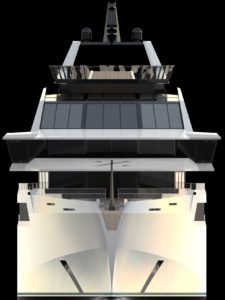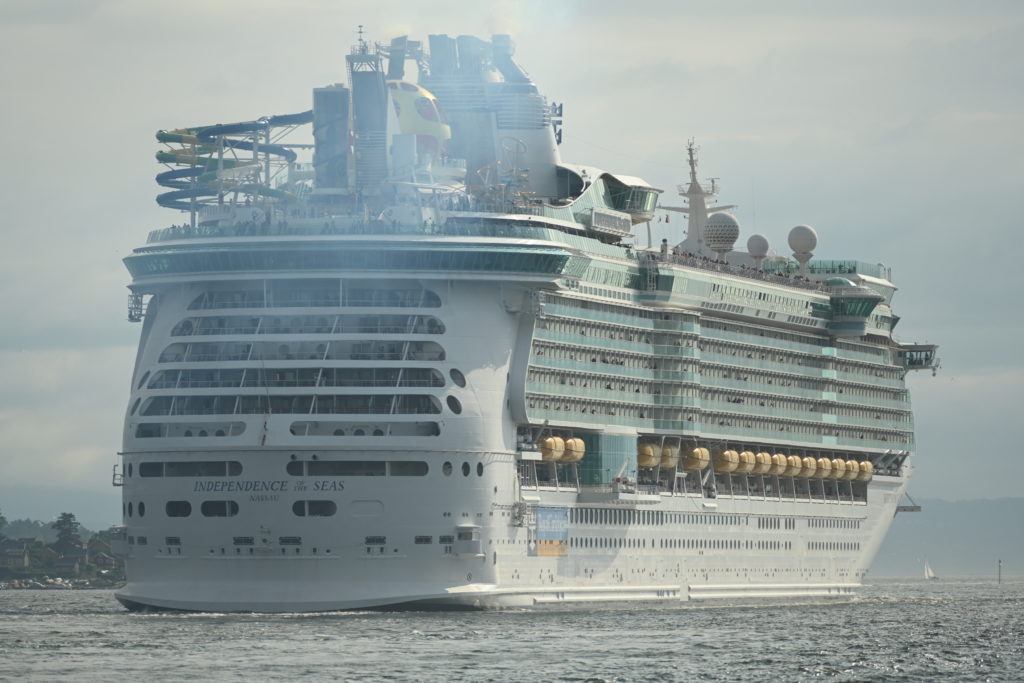In the first instalment of a new series, Gavin Lipsith looks at the impact of cruise vessels on air pollution and climate change.
In a shipping industry that is largely invisible to the public and considers itself indispensable to world trade, cruise vessels are an anomaly. It’s hard to hide an eighteen-floor high machine looming over a tiny Caribbean port, and their very nature as floating holiday homes makes it hard to argue that they are anything but a luxury item. As the global focus on limiting climate change and pollution intensifies, it is no surprise that cruise operators are finding themselves on a very public front line.
Earlier this month a blog on the International Council for Clean Transportation website described cruising as the most carbon-intense form of transport a passenger can take. The author, Dr Bryan Comer, dived into ICCT’s shipping and aviation emissions inventories for a comparison. While the most efficient cruise vessels emit 250g of CO2 per passenger-kilometre, the carbon intensity of transatlantic flights ranges between 10-150g. Even taking the hotel stays of aircraft passengers into account did not alter the fact that cruises are among the most highly emitting holidays you can take.

“The main problem is that on land, you can choose to behave differently,” says Sönke Diesener, Transport Policy Officer at German environmental organisation NABU. “You can travel by rail or book an ecological hotel to lower your carbon footprint. At sea there is no such choice.”
Solutions are emerging on smaller vessels, notably the ground-breaking expedition ferry Vision of the Fjords, whose creator is now planning a series of zero-emission, hydrogen-fuelled luxury cruise vessels. But on the cruise ships that account for most cruise passenger traffic, and the vast majority of the sector’s emissions profile, it will be a long wait until such technologies are available at the scale needed.
Prolonging HFO use
There are other challenges too. While the Cruise Lines International Association proudly claims that 176 ships will be fitted with exhaust gas cleaning systems by 2027 – around 81% of capacity that is not powered by LNG – for Diesener, this represents a major environmental concern.
“No other sector is prolonging the use of heavy fuel oil like cruises,” he says. “Nearly 50% of vessels are fitted with scrubbers today, compared with 10-20% in the next biggest sector, bulk carriers.”
Heavy fuel oil is associated with high sulphur oxide, particulate matter and black carbon emissions that contribute to air pollution and global warming. Its warming potential in particular has already led to a ban on its use in the Arctic, while several ports prohibit their use over fears that discharge water might harm the marine environment. Scrubbers tackle emissions from HFO to some degree, but environmentalists dispute both their efficacy and the extent to which they are used when no-one is monitoring the vessels.
However, driven by the strong incentives of incoming regulations, investor pressure and a green image for potential customers, cruise lines are cleaning up their act. They already boast some of the most sophisticated waste treatment systems either on land or at sea. They have also been among the first to adopt LNG as a fuel to reduce air pollutants, although whether this improves or worsens climate impact is a matter of debate and depends on the engine technologies deployed as well as upstream emissions.

Evolving climate policies
According to Diesener, the climate policies of at least some of the bigger cruise companies suggest more dramatic change is on the way. As part of its ranking of cruise vessels’ climate and pollution measures, NABU asked the operators of vessels calling at German ports about their climate policies. Although this year’s rankings are not yet published, several have reported that they will introduce their first climate-neutral vessels in service by 2030, and a handful aim to have a climate-neutral fleet by 2040.
Those aims represent a shift since the 2020 rankings, when NABU noted that “hardly any shipping company has a concrete strategy to push ahead with the consistent conversion of the fleet towards emission-free operation”. The emerging ambitions go beyond IMO’s current targets, and even beyond current technological possibilities. According to a recent study of Baltic Sea cruise vessels, the current best practice for an ecological cruise combines LNG engines with onshore power, supplemented by short-range excursions taken on electric buses.
If even that current best case is beyond the reach of most big cruise vessels today, how will cruise lines manage to transition to a zero-emission future? Part of the answer lies in a huge orderbook. According to Cruise Industry News, 75 new vessels will be delivered by 2027, compared to 347 vessels in operation today.
Those vessels will have to achieve low emissions through IMO’s EEXI and CII design and operational efficiency indexes, due to enter force next year, and will at least be ready for IMO’s 2030 target of reducing carbon intensity by 40% (on 2008 levels). Many will also be built with an eye on the more ambitious 2050 target.
Future technologies
Those and further vessels will deploy a range of technologies that are not available to big ships (or at all) today – future fuelled power plants, hybrid energy systems with batteries and fuel cells, even better waste treatment systems and emerging digital optimisation tools. Those technologies and their application in cruise vessels will be explored in detail in future instalments of this series.
Cruising is in the public spotlight, yet to date there is little clear insight into how the biggest vessels – with passenger capacities now nearing 7,000 – will achieve the expectations of an increasingly environmentally engaged customer base.
But technologies are emerging that can take vessels a long way towards decarbonisation. If cruising is unique among shipping sectors for its visibility and luxury status, it will need to be anomalous too in the pace with which it cuts its environmental footprint.
NOTE: The next article in this series will explore the power plant and future fuels that big cruise vessels will need to reach zero emissions. If you have a vision for the future of cruising, please get in touch at: gavin@telegraphcommunications.co.uk































